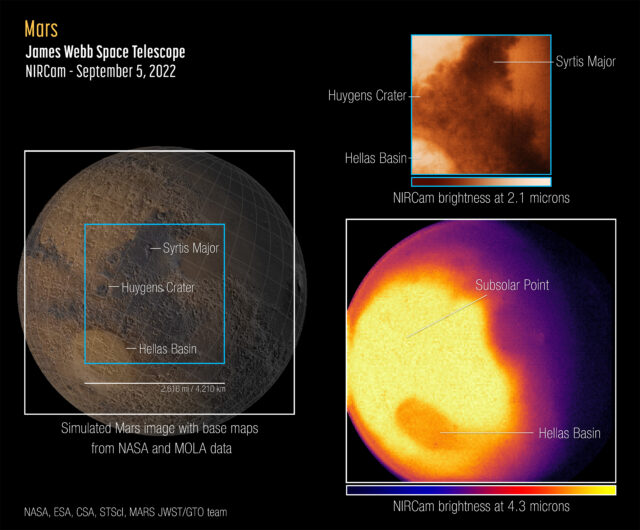
First Mars Images from Webb Telescope Reveal Clues About Its Atmosphere
The (JWST) was designed to pick out the faintest signals from objects billions of light years away, but that doesn’t mean it can’t be great for checking out things in our own backyard. After a few weeks back, NASA has turned the next-generation telescope toward Mars. NASA says Webb offers a unique view of Mars with its unparalleled infrared sensitivity.
Unlike Hubble, the JWST left Earth orbit after launch. Because its infrared instruments are so sensitive, it needed to get out into the frigid depths of space. It’s sitting at the L2 Lagrange point, about a million miles away.
Mars is one of the brightest objects in the sky, both in the visual spectrum and in the infrared where Webb operates. That means the team . Webb was created to observe very faint signals at great distances. To avoid saturating the detectors, Webb took extremely short exposures to collect only some of the light coming from Mars. Special data analysis techniques helped fill in the gaps.
The NIRCam images below have been overlaid with surface mapping data to illustrate how the different regions vary. At MIRCam’s shorter 2.1 micron wavelength, the image is dominated by reflected sunlight. That helps to resolve surface-level details like crater rims and patches of volcanic rock. At 4.3 microns, NIRCam shows the planet’s thermal emissions. The brightest region is the warmest because the sun is directly overhead. That region is shifted to the south because it’s winter in the northern hemisphere currently.

The 4.3-micron data also reveals an interesting atmospheric effect. The Hellas Basin (indicated in the image) is a large impact crater, resulting in terrain that is at a lower altitude. That means the atmospheric pressure is greater, and more of the sun’s energy is absorbed by the carbon dioxide there. That makes Hellas Basin appear cooler from Webb’s position.
The telescope also activated the NIRSpec instrument to capture its first near-infrared spectrum of Mars. The precise analysis of atmospheric conditions could provide insights into dust, icy clouds, and types of rock on the surface. This data will be the subject of a future study, but this won’t be the last time someone points Webb at the red planet.
Now read: